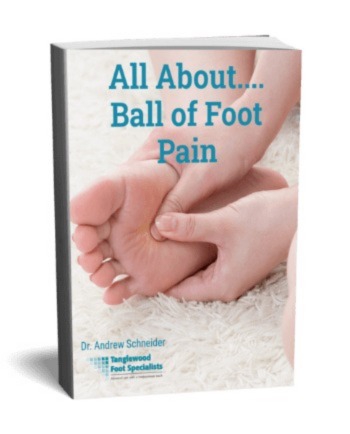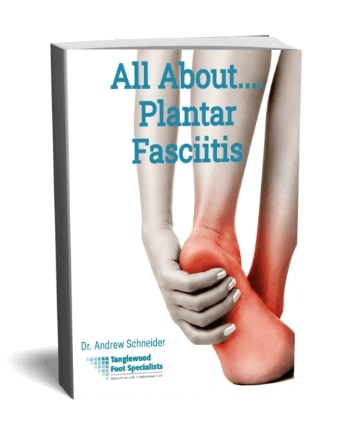Have you ever felt your feet start to hurt on a long road trip? Do you sometimes notice that your foot goes numb when you've been driving for a while? Well, as it turns out, this isn't just a nuisance. And you're not alone in your pain.
In fact, these are symptoms of a painful condition known as driver's foot. If left untreated, this condition can worsen over time. It could even leave you sore and unable to perform simple daily tasks outside of your car.
Want to stay safe and keep on cruising? Let's explore what causes driver's foot to develop. Then, we'll review what you can do if your feet are already affected.
What Causes Driver's Foot? ![Repetitive motions like driving can lead to painful foot injuries]()
Driver’s Foot is, obviously, caused by driving. It can affect professional and recreational drivers alike. Typically, painful symptoms hit your right, or driver's foot. And you'll usually feel the pain of driver's foot in the heel of your foot, across your big toe, or in the ball of your foot, near the big toe.
Now, here in Houston, we're all at risk for this condition. Why? Sitting in our world-famous traffic jams makes this pain worse, as stop-and-go driving forces you to hold your foot in one position for extended periods of time. As such, it's important to optimize conditions in your car to try and prevent this painful problem.
Preventing Driver's Foot
If you drive regularly, there are steps you can take to prevent the pain of driver's foot. First, try to avoid keeping your seat in a position that's close to the car's pedals. When you move too close, the angle of your foot when it touches the pedals could compress your ankle joints. Similarly, you can't drop your seat too low: that creates an angle that puts more pressure on the back of your heel.
It's also critical to pick your driving shoes as carefully as you select running sneakers. And to choose pairs with plenty of arch support and cushioning. Even if you need to wear dress shoes when you reach your destination, think about sticking a spare pair of sneakers in your trunk so you can always drive in supportive foot gear.
Now, many of our runners know that sneakers don't always offer enough support. So, if you wear orthotics when you train, make sure to wear them when you drive as well.
Even with proper positioning and foot gear, you'll need to take extra care on longer driving trips. Break up journeys into smaller chunks, getting out of the car and moving feet and ankles during breaks.
Then, after any major driving trip, give your feet some extra TLC. Take off your shoes as soon as you're done, rubbing them down to improve circulation. If you notice any spots that are painful or holding extra tension, you can even apply ice for up to 20 minutes for extra relief.
Painful Driver's Foot: Is Treatment Necessary?
If your feet don't usually hurt when you drive, one painful session isn't a problem. But if you regularly notice pain after driving, it's worth intervening. And, the treatment we recommend will depend on where you experience the pain of driver's foot.
Pain in the ball of your foot after driving ![woman holding ball of foot]()
This symptom of driver's foot usually manifests when your foot touches the pedal. We consider this an overuse injury. It develops from repeatedly pushing down on pedals. And, if you don't seek treatment, your pain will worsen. You could even develop bursitis (an inflammation of the fluid-filled sacs between your toe joints), or bone bruises on your toe bones.
Sometimes, it's not how much you drive but the type of shoes you wear while driving that cause pain to the ball of your foot. Women wearing high-heeled shoes are more likely to suffer. Either way, we can make suggestions like wearing a gel-padded insole to help to lessen the pain.
Pain in the heels of your foot
Why do your heels become bruised and sore when you drive? It has to do with the pressure you put on your foot while it rests on the car's floor. For long-haul drivers, it can equal the pressure placed on feet from all-day standing. Then, when you rock that foot to hit the gas or the brakes, the pain may become worse. In this case, wearing different shoes may help lessen your heel pain. And custom orthotics can also improve this condition.
Top-of-the-foot pain
When you experience this type of driver's foot pain, it's usually caused by built-up tension. And that tension comes from holding car pedals in place for extended amounts of time.
Now, stiff gas pedals can make this problem worse, since you will have to push down on them with greater force. So make sure to grease those pedals regularly. Fortunately, this kind of pain is typically temporary; it should go away quickly after you park and walk around a bit. And, to speed up your pain relief? When you exit the car, try flexing your feet and rotating them in circles. This should alleviate top of foot pain quickly.
Does Driver's Foot Require Treatment?
As we mentioned earlier, if driver's foot is only an occasional problem, you don't need a major treatment plan. In fact, you can probably manage the condition by limiting drive times and taking more frequent pit stops. But if the pain of driver's foot is affecting your ability to do your job, or is lingering outside of the car, your symptoms may be a sign of a bigger problem. And you'll never find relief unless we diagnose that underlying problem.
So, what should you do if your heet hurt every time you drive? If that's the case, come make an appointment at Tanglewood Foot Specialists. In addition to the tips we already shared, we can suggest some more permanent treatment options. In that way, you can avoid driver's foot complications. And we can help stop the pain for good, so you can drive comfortably once again.





















